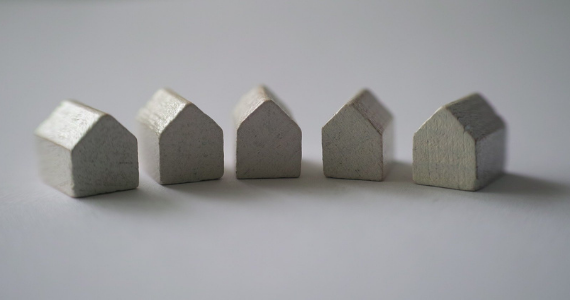By Tony Kaye, Senior Personal Finance Writer, Vanguard Australia
The Federal Government announced in the May Budget that it is widening the scope of the scheme allowing eligible Australians to sell their home and put extra money into their superannuation.
First introduced in the 2018-19 financial year, the “downsizer measure” has provided an opportunity for individuals 65 years and older to add up to $300,000, and couples up to $600,000, into their super from the proceeds of their home.

Data from the Australian Tax Office shows that, as of 30 April 2021, just over 23,000 older Australians had collectively made $5.46 billion in downsizer contributions to their super fund.
But those numbers are set to increase significantly over time.
From 1 July 2022 the minimum age limit for participation will be reduced to 60, which will open the superannuation door for more people wanting to build up their superannuation account balance.
Here’s what you need to know
The downsizer scheme is administered by the Australian Tax Office (ATO) and has a range of eligibility criteria in addition to the minimum age requirements.
The ATO will only permit additional super contributions if they are made using the proceeds from selling your principal place of residence.
You or your spouse must have owned your home for 10 years or more prior to the sale, with your ownership calculated from the date of settlement when you bought your home.
Your home needs to be exempt or partially exempt from capital gains tax under the main residence exemption.
There’s also a strict definition of what constitutes a home. It must be in Australia and cannot be a caravan, houseboat, or a mobile home.
You’re unable to use the downsizer scheme to deposit funds from the sale of an investment property. These can only be done through a non-concessional (tax-paid) super contribution.
Downsizer super contributions must be made within 90 days after you receive the proceeds of your home sale. The ATO will allow for a longer period if the delay is due to circumstances beyond your control.
The downsizer measure is a one-off, so once you’ve made a super contribution you’re unable to do so again by using the proceeds from another home in the future.
However, if the home that is sold is only owned by one spouse, the spouse that does not have an ownership interest is able to make a downsizer contribution or have one made on their behalf, provided they meet the other eligibility requirements.
Downsizer contributions form part of the tax-free component in your super fund. They can be made in addition to non-concessional super contributions and do not count towards your personal super contribution limit.
They can also be made even if you have a total super balance of more than $1.6 million.
Your downsizer contribution will not affect your total superannuation balance until your total super balance is re-calculated to include all your contributions, including your downsizer contributions, on 30 June at the end of each financial year.
Ultimately any downsizer contributions you make however will count towards your tax-free transfer balance limit when you move into pension phase at retirement.
You’ll need to make sure your super fund (or funds) accepts downsizer contributions. If you don’t currently have an open account with a super fund, you’ll need to open a new super account to make your downsizer contribution.
You’ll also need to provide your fund with a completed downsizer contribution into super form, which can be downloaded from the ATO’s website, either before or at the time of making your downsizer contribution.
Be mindful of the pension assets test
People considering making a home downsizer contribution into super – especially those already receiving a partial or full government Age Pension – should do proper due diligence.
Because the Age Pension is calculated on the value of all assets outside of your family home, including the amount you have in your super accumulation or pension account, a large cash injection from your home proceeds may result in a breach of assets test rules.
Under what’s known as the taper rate, Age Pension entitlements are reduced by $3 per fortnight for every $1,000 in assets over the Government’s asset test thresholds.
The current assets test limits are shown in the table below.
|
Full Age Pension |
Homeowner |
Non Homeowner |
|
Single |
$268,000 |
$482,500 |
|
Couple |
$401,500 |
$616,000 |
|
|
||
|
Part Age Pension |
Homeowner |
Non Homeowner |
|
Single |
$585,750 |
$800,250 |
|
Couple |
$880,500 |
$1,095,000 |
Source: Department of Human Services, limits effective 20 March 2021
Once an individual or couple breach the limits for the full Age Pension, their fortnightly payments will gradually reduce using the taper rate. Those on a part pension could find their payments cease altogether if they move above the maximum thresholds.
So, even with a higher superannuation balance because of your home sale contribution, your total income stream could be less than what you received from a full or part Age Pension.
It is essential to speak to us on Phone 0452 553 992 before proceeding, especially with respect to social security means testing.
Source: Vanguard May 2021
Reproduced with permission of Vanguard Investments Australia Ltd
Vanguard Investments Australia Ltd (ABN 72 072 881 086 / AFS Licence 227263) is the product issuer. We have not taken yours and your clients’ circumstances into account when preparing this material so it may not be applicable to the particular situation you are considering. You should consider your circumstances and our Product Disclosure Statement (PDS) or Prospectus before making any investment decision. You can access our PDS or Prospectus online or by calling us. This material was prepared in good faith and we accept no liability for any errors or omissions. Past performance is not an indication of future performance.
© 2021 Vanguard Investments Australia Ltd. All rights reserved.
Important:
Any information provided by the author detailed above is separate and external to our business and our Licensee. Neither our business nor our Licensee takes any responsibility for any action or any service provided by the author. Any links have been provided with permission for information purposes only and will take you to external websites, which are not connected to our company in any way. Note: Our company does not endorse and is not responsible for the accuracy of the contents/information contained within the linked site(s) accessible from this page.


